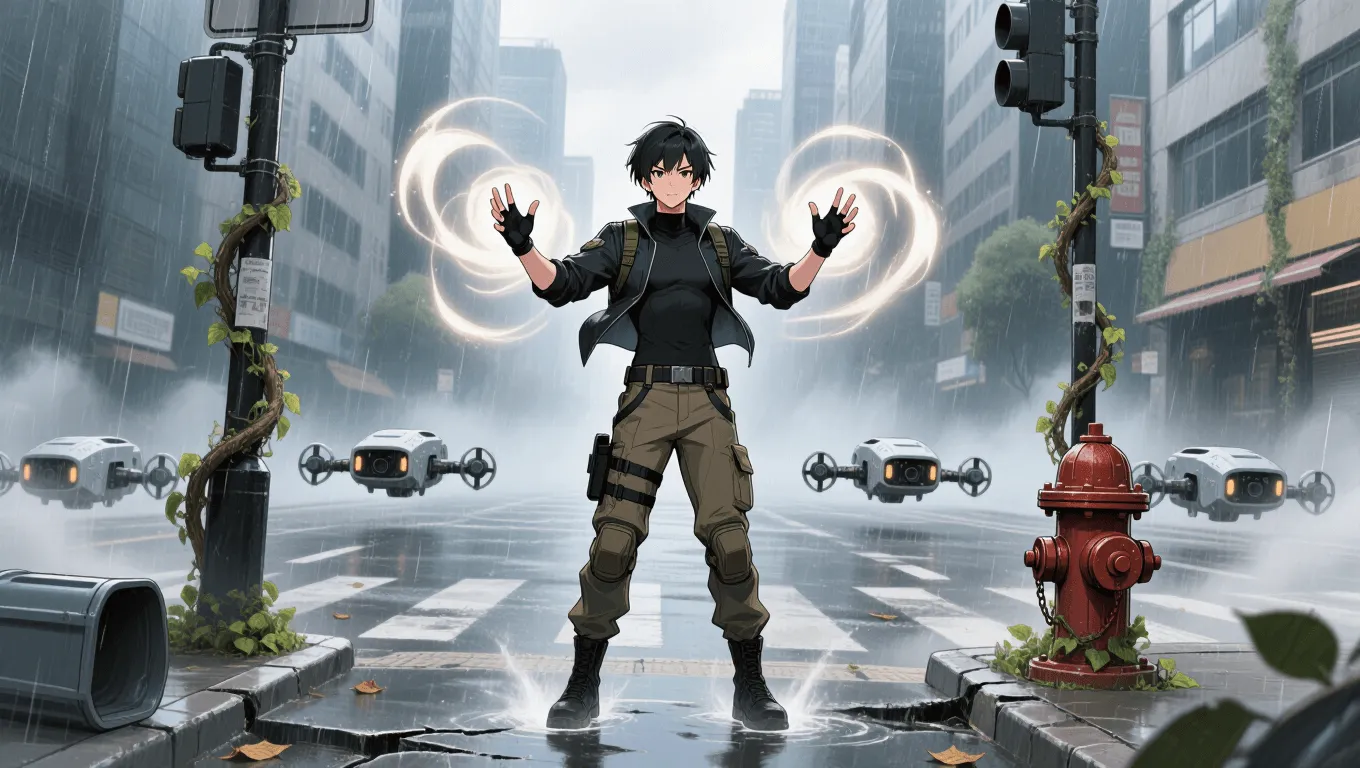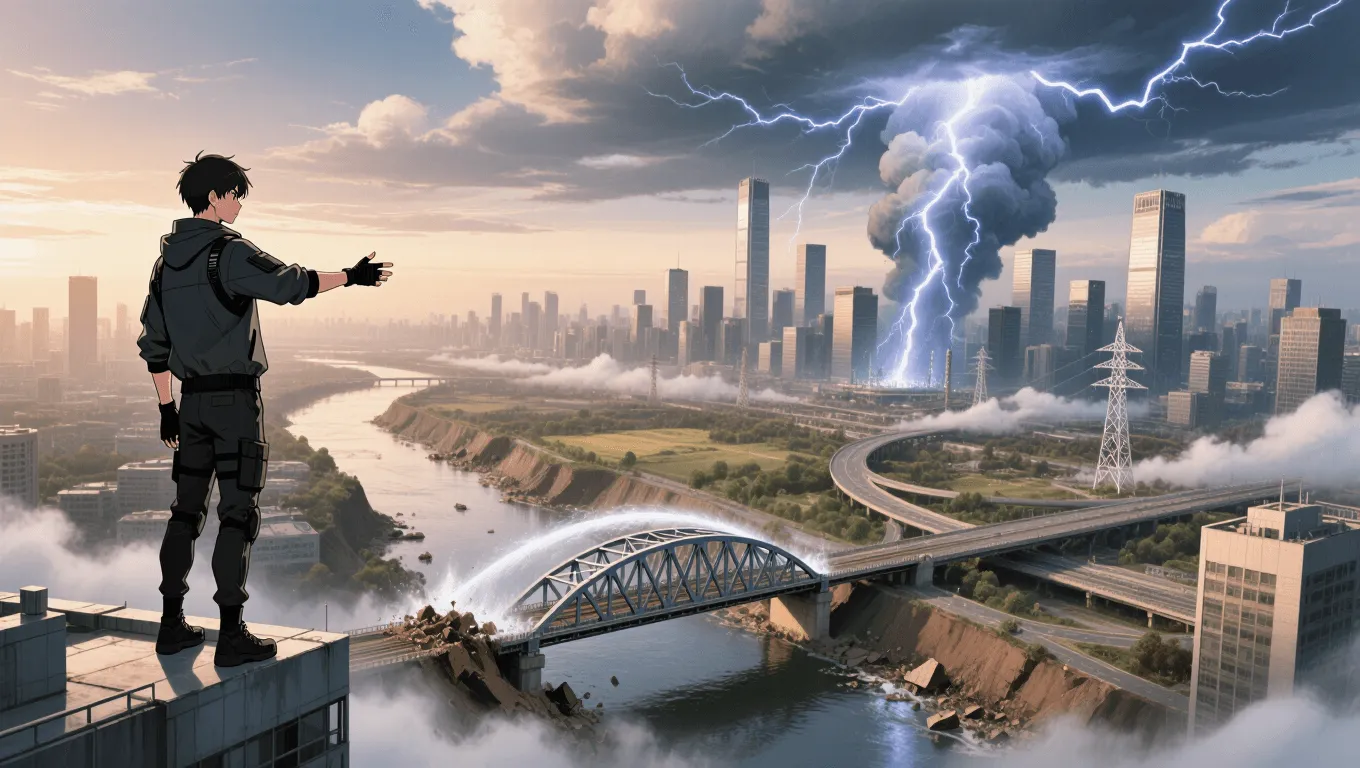Nature’s Wrath: Mastering the Planet’s Fiercest Forces

Nature’s Wrath Video Demo 🎬
Table of Contents
Nature’s Wrath is a high-impact superpower that channels the raw violence and vitality of the natural world—storms, quakes, tides, and the surge of living ecosystems—into precise, battle-ready effects. From summoning a tempest to uprooting streets with geomancy, Nature’s Wrath blends elemental fury with environmental control. For readers who want to explore more abilities, visit the complete superpower wiki or try a new ability with the random superpower generator.
What Is Nature’s Wrath
Nature’s Wrath is an advanced umbrella power that allows a user to command macro-scale natural phenomena and micro-scale ecological responses. Unlike single-domain abilities (e.g., pure aerokinesis or strict hydromancy), this superpower spans multiple disciplines—geomancy, aeromancy, hydromancy, pyromancy, and cryomancy—plus biotic influence over flora and fauna. Practitioners can trigger thunderstorms, accelerate plant growth, direct seismic shockwaves, redirect rivers, quell wildfires, and roll a fog bank over a city block.
At its core, Nature’s Wrath is about leverage. The wielder taps into ambient energies (wind pressure, thermal gradients, oceanic momentum, tectonic tension, photosynthetic output) and converts them into tactical effects. In capable hands, it’s a pervasive form of battlefield control that shapes terrain, weather, visibility, and morale—all at once.
Core abilities of Nature’s Wrath
Elemental Dominion
-
Atmospheric Manipulation (Aeromancy): From stiff breezes to gale-force winds, microbursts, jetstream nudges, and large-scale storm calling. Create sandstorms, downdrafts, and tornado-grade vortexes.
-
Hydromancy: Command rain, fog, mist, and open water. Raise localized tides, generate pressurized water jets, or form ice barriers via rapid temperature shock.
-
Geomancy: Trigger controlled tremors, reshape ground, lift earthen ramparts, fissure asphalt, and stabilize landslides. Apply seismic shock to stagger armored targets.
-
Thermal Control (Pyro/Cryo): Indirect wildfire control (starving or feeding oxygen), flash-freezing surfaces, sudden cold snaps, or heat bursts to disrupt drones and electronics.
Weather Mastery
-
Storm Summoning: Combine wind, pressure, moisture, and static charge into thunderstorms. Direct lightning strikes (with precision “lightning rod” guidance), orchestrate rolling thunder to disorient, or build monsoon-grade cloud decks.
-
Blizzard and Cyclone Creation: Spin up cyclonic systems for area denial; use blizzard formation for concealment and movement slow.
Biotic Command
-
Flora Control: Accelerate plant growth, weave living barriers, deploy thorned vines for restraint, root-bridging to cross gaps, and photosynthetic healing in green-rich zones.
-
Fauna Coordination: Non-invasive guidance for animal movement (e.g., flocking patterns to distract or overwhelm sensors). Ethical wielders use this sparingly and non-harmfully.
Terrain Reshaping & Environmental Engineering
-
Rapid Fortification: Raise berms, trenches, and seawalls. Convert rubble into defensive cover. Divert debris flows or mudslides.
-
Aquifer and Runoff Management: Redirect water courses to flood or drain zones, douse fires, or expose hidden pits.
-
Visibility & Sensor Warfare: Fog banks, dust veils, and ionized air columns to scramble optics and LIDAR.
Eco-Energy Conversion
-
Kinetic Harvesting: Borrow momentum from wind and waves for short bursts of superhuman strength or speed.
-
Electrostatic Build-Up: Charge the atmosphere to prime lightning or energize electrokinetic constructs.
-
Thermal Borrowing: Pull heat from hot zones to fuel cryo maneuvers, or push heat into cold fronts to break ice.
Environmental Awareness
-
Barometric Sense: Detect pressure dips, storm fronts, and wind shear before they manifest.
-
Geomantic Echo: Feel stress lines, voids, and resonance beneath the ground (useful for mines, tunnels, or structural weaknesses).
-
Hydrologic Perception: Track moisture gradients, currents, and submerged hazards.
Application / Tactical Advantages in Combat
Battlefield Control: Nature’s Wrath excels at reshaping engagement rules. Cyclones split enemy formations; earthen bulwarks neutralize ranged fire; flash floods cut off retreat lanes. A single user can create moving “no-go zones” that force opponents into kill corridors.
Area Denial & Crowd Control: High winds, sleet, or tangled root mats slow advances. Fog and dust ruin sightlines and drone surveillance. Sudden barometric changes rattle pilots and destabilize small aircraft.
Precision Strikes: A lightning lance can disable a mech’s joints. Focused tremors under a tank drop it into a sinkhole. High-pressure water cutters shear through composite plating with surgical accuracy.
Mobility & Extraction: Tailwinds accelerate allies; vine lattices form bridges; ice slides create rapid egress routes; localized downdrafts stall enemy jump packs.
Counter-Device & Anti-Drone: Ionized air paths mislead targeting; sleet and salt spray foul rotors; muddy terrain traps ground drones; rapid temperature swings cause sensor drift.
Stealth & Deception: Fog fields mask movements; rain noise covers footfalls; rustling canopy decoys microphones; drifting pollen interferes with air-quality alarms.
Humanitarian Utility: Quell wildfires, reinforce levees, clear avalanche paths, or irrigate a drought-stricken zone. This dual-use capability amplifies the power’s narrative impact beyond combat.
Level: Level 1 🏙️, Level 2 🌇, Level 3 🌃
Level 1 🏙️ — Localized Influence

Beginners manipulate weather and terrain in tight radii (street-to-neighborhood scale). Expect gusts strong enough to topple light cover, sudden rainbursts, ankle-deep flooding, and vine growth sufficient for entanglement. Quakes feel like a heavy subway rumble—startling but rarely structural. Precision is decent; endurance is limited. Best uses: quick escapes, small-team skirmishes, anti-drone screens, and distraction plays.
Signature moves at Level 1:
-
Urban Squall: A 200–300 m gust front that scrambles line-of-sight and knocks back attackers.
-
Tangle Snare: Fast-growing creepers to restrain 1–3 foes or jam a doorway.
-
Pavement Pulse: A tremor that cracks asphalt, slowing ground vehicles.
Level 2 🌇 — City-Scale Control

Intermediates command district-to-city-wide effects. They can sustain a thunderstorm cell, redirect a river channel temporarily, or raise earthen walls a few meters high. Lightning strikes achieve target-level precision; water pressure jets cut metal; controlled landslides reshape chokepoints. Maintaining multiple phenomena at once becomes viable (e.g., fog + crosswinds + lightning net).
Signature moves at Level 2:
-
Tempest Net: A lattice of lightning paths guided by ionized air, excellent for anti-air denial.
-
Tidal Step: A cityfront surge that floods low-lying blocks to halt armor columns.
-
Green Barricade: Rapid-growth hedgerows that absorb shrapnel and slow vehicles.
Level 3 🌃 — Regional Overdrive

Masters bend systems on a regional scale and harmonize multiple elements without burnout. They can stitch fronts together into a monsoon wall, induce or break drought patterns, redirect jetstream ridges briefly, or trigger deep seismic waves with surgical control (e.g., releasing tension safely versus weaponizing it). They can transmute environmental energy into kinetic burst feats and maintain precise biotic control without collateral harm.
Signature moves at Level 3:
-
Sovereign Storm: A contained supercell that travels with the caster, featuring selective lightning, hail veils, and gale curtains.
-
Tectonic Choreography: Controlled microquakes to topple mechs while preserving fragile infrastructure.
-
Ocean’s Verdict: A targeted tsunami damped at the edges to minimize civilian harm.
Limitations of using the Nature’s Wrath
-
Environmental Dependency: Effects scale with available inputs. Arid zones curb hydromancy; stable bedrock limits geomantic drama; clear skies slow storm-building without prior seeding.
-
Energy & Focus Drain: Coordinating cross-element actions taxes stamina and cognitive bandwidth. Overuse can cause disorientation, migraines, or temporary sensory dulling (e.g., “barometric tinnitus”).
-
Collateral Risk: Seismic maneuvers and flooding carry high civilian and infrastructure risk. Ethical practitioners prioritize containment, controlled-release techniques, and safe corridors.
-
Urban Interference: Dense skyscraper canyons, underground utilities, and concrete deserts dampen or redirect effects unpredictably.
-
Feedback Loops: Weather systems have inertia. A storm cell may self-sustain longer than intended, or a diverted river might erode unplanned channels.
-
Range & Resolution Tradeoff: Large-scale phenomena reduce fine control. Precision lightning at 5 km is harder than at 500 m.
-
Cooldown Windows: The atmosphere, hydrology, and lithosphere resist abrupt resets. Attempting back-to-back extremes (blizzard → heatwave) increases failure chance.
-
Ethical Constraints: Fauna guidance should respect autonomy and biodiversity; flora overgrowth can introduce invasive dynamics if not reversed.
Weakness against what other superpowers
-
Power Nullification / Anti-Magic Fields: Hard counters that sever the caster’s link to environmental energies.
-
Vacuum or Pressure Domes: Airless or pressure-stabilized zones blunt storms, muffle sound, and neuter aeromancy.
-
Gravity & Inertia Control: Stabilizes tremors, flattens waves, and pins debris to the ground, negating much of the chaos factor.
-
Molecular Barriers & Force Fields: Bubble shields shed rain, deflect debris, and ground lightning harmlessly.
-
Thermal Insulation / Cryo-Fire Specialists: Tuned insulation beats sudden heat/cold swings; skilled cryomancers or pyromancers can counter specific plays.
-
Technopathy with Weatherized Hardware: Weather-sealed drones, hydrophobic coatings, and adaptive avionics reduce the efficacy of storm tactics.
-
Vibration Dampening: Counter-seismic fields absorb shockwaves and prevent structural resonance.
-
Toxin / Gas Immunity: Fog-based irritants or pollen gambits lose bite against bio-shielded foes.
-
Teleportation & Phasing: Bypass terrain traps, walls, floods, and root entanglements entirely.
Synergistic Power Combos
-
Thunder-Forge (Electrokinetics + Nature’s Wrath): Ionized air corridors turn into rails for guided lightning; storm batteries recharge shields and weapons.
-
Glacier Siege (Cryomancy + Hydromancy): Flood a zone, then flash-freeze into anti-vehicle caltrops and moving ice conveyors.
-
Quake-Net (Geomancy + Metal Manipulation): Split ground, then snap rebar and rails into restraining cages.
-
Tempest Veil (Illusion + Weather): Fog and sleet mask holograms, making decoys more convincing to both human eyes and IR/LIDAR.
-
Tidal Gate (Portal Creation + Hydromancy): Port seawater inland for crowd control or firefighting; port it back to prevent floods.
-
Green Revival (Photosynthetic Healing + Flora Control): Combat medics heal faster under canopies while vines shield the triage zone.
-
Sirocco Run (Aerokinesis + Speedster Physiology): Tailwind tunnels allow blindingly fast, low-drag strikes.
-
Solar Engine (Solar Beam + Thermal Control): Concentrated sunlight seeds storm thermals or powers eco-energy bursts.
Known Users
-
Storm (Marvel) — Iconic weather manipulator capable of precision lightning, hurricanes, and climate-scale feats.
-
Swamp Thing — Avatar of the Green with profound flora command and environmental guardianship.
-
Poison Ivy — Botanical genius who weaponizes plant growth and toxins with surgical precision.
-
Terra (DC Comics) — Geokinetic prodigy known for tectonic-level earth manipulation.
-
Aquaman — Hydromancer-adjacent monarch whose oceanic command exemplifies battlefield-scale water control.
For more abilities related to Nature’s Wrath, browse the full Superpower Wiki or spark inspiration with the Random Superpower Generator.
